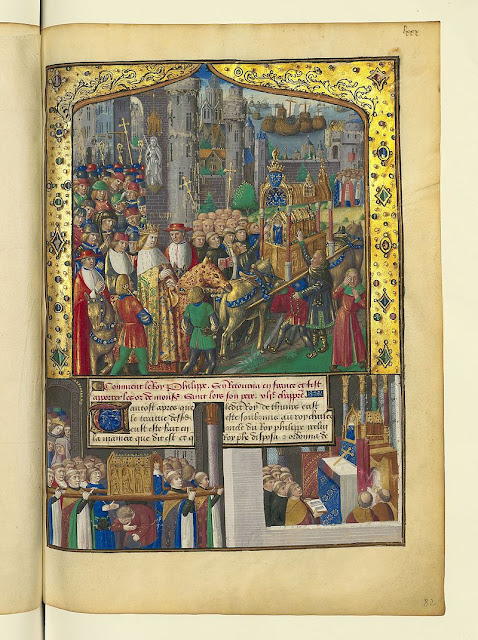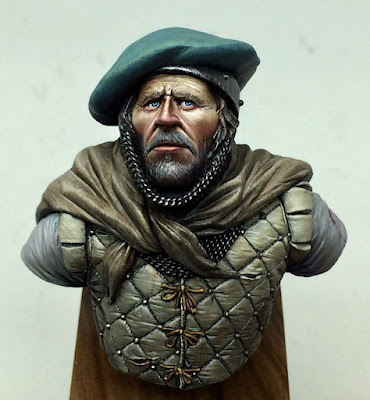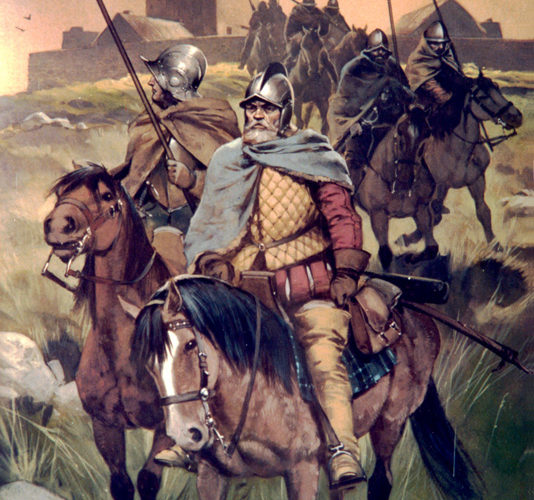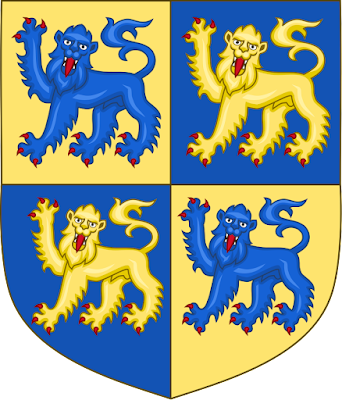Harry
of England is a new history by Teresa Cole of the eight kings of
England named Henry. The rear of the jacket features an interesting
quote from a 17th century poem on Henry V:
“O,
when shall such English men,
With such acts fill a pen
Or
England breed again
Such
a King Harry?”
To
judge from Cole's narrative, England should be wary of breeding any
more King Harrys. Not that they were all flops, by any stretch, but
this is essentially a tale of cruelty, violence, avarice, war and
invasion, with the odd period of calm between conquests. Six of the
eight gentlemen on display here were forceful, dominant
personalities, one was a mediocrity, the other a crashing failure.
Let us copy the author's example, and go through them one at a time.
First,
Henry I, otherwise known as Beauclerc or Fine-Scholar because he
could read. This opening chapter is a little disjointed, split
between colourful anecdotes of Henry's youthful escapades, and sober
discussion of the creation of the Exchequer and various legal codes
during his reign. This gives the impression that many of our worthy,
respectable institutions were founded by a man who was part-pirate,
part-lawyer. Perhaps so: the mindsets are arguably similar.
Henry's
grandson was Henry FitzEmpress, a man of demonic energy who snatched
the King of France's wife and – more by accident than design –
cobbled together a vast, unsustainable empire that fell apart almost
as soon as he died. This Henry, famous for killing Thomas Becket and
fighting his own children, was perhaps the closest England came to
having a genius on the throne. Imbued with enormous energy, intellect
and strength of will, he was a hard act to follow.
Henry III
makes for an uninspiring sequel. A king 'of simple life and plain',
according to Dante, the account of his reign is a bit of a slog by
comparison with the previous two. At first dominated by ambitious
advisors, Henry eventually shrugged them off to achieve nothing very
much. Following two dismal attempts to recover lands in France, he
agreed to the Treaty of Paris, a catastrophic agreement that reduced
his dynasty to mere vassals of the kings of France. After a purple
patch in the middle of the reign, Henry's fortunes in England and
Wales deteriorated, until he was obliged to fight a ruinous civil war
against Simon de Montfort. To do him justice, Henry survived all his
trials and managed to die in bed, an achievement in itself.
Next,
Henry IV or Bolingbroke, who kicked his cousin Richard II off the
throne and founded the Lancastrian dynasty. Cole describes Henry as a
serious, well-intentioned man who might have made a fine king in less
stressful circumstances. Maybe; he certainly did well to hang onto
his stolen crown, in the teeth of endless plots and wars and
rebellions. Cole concludes, quite reasonably, that Henry probably
wished he had done something else with his life.
Then
we have another superstar of the Plantagenet dynasty, Henry V. I
found this one of the most interesting chapters, as Cole focuses on
Henry's diplomacy and domestic policies as well as the French wars.
Nor does she sugar-coat the character of this brutal, wily king, who
needed all the glitter Shakespeare tipped over him. Cole also makes
the point that Henry's grinding war taxes were causing serious
discontent in England, long before his premature death of dysentery.
If he had lived, and continued to pump every resource into the
conquest of France, England may have collapsed into civil war even
sooner.
This
leads us onto Henry VI. Poor Henry; the runt of the litter, really,
incapable of redeeming his father's legacy, controlling the rival
factions at court, or doing anything useful. Cole's account of his
reign reads like one long unravelling disaster, both at home and
abroad. Despite occasional efforts to assert himself, Henry could do
nothing to prevent the loss of France, including the precious duchy
of Gascony, or the final slide into civil war. In this context, his
bouts of insanity were merely the icing on a very rotten cake. All of
this makes for a depressing read, and one is left with the impression
that death – when it came for Henry, at the hands of Yorkist
assassins – was a merciful release.
Henry
VII, perhaps surprisingly, is something of a relief from all this
failure and woe. A rank outsider, with a technically laughable claim
to the throne, he defeated Richard III at Bosworth and founded (for
better or worse) the Tudor dynasty. Of Welsh descent, Henry was one
of the most successful usurpers in British history. He navigated his
way through some very choppy waters with a shrewd touch, fighting off
one challenge after another. Cole makes the telling remark that
history has not always been kind to Henry, apparently because he
lacked sufficient glamour and romance. A bean-counter, in other
words, who accumulated wealth and refused to fight silly wars. A fig
for glamour, say I. Give me a dull little king, who checks and
counter-signs his own accounts, every time.
We
end with the most famous of the lot, Henry VIII. Charles Dickens, in
his history of England, described Bluff King Hal as one of the worst
villains to ever draw breath. Cole, it would seem, does not disagree,
Nor do I. Even compared to the sins of his forebears, there is
something especially repellent about the eighth Henry. He was not
unsuccessful, and England continued to prosper (at least in terms of
finance) under his rule. Even so, I found myself grimacing at his
antics. The preposterous, swaggering ego; the faithless disloyalty of
the man; his habit of killing former friends and loyal advisers; the
willingness to go to any extreme, just to serve his own swollen
ambition and sense of self. And, of course, the disgusting treatment
of his wives, especially Catherine of Aragon and Anne Boleyn. When
the bloated, smelly tyrant finally expired, I almost felt like
punching the air.
Overall, despite the occasional grimace, I
thoroughly enjoyed this. To condense eight turbulent reigns in a
little under 300 pages is a difficult task, but Teresa Cole has done
an admirable job. Perhaps the sequel will be on English kings named
John. A great saving on paper.
Disclosure: a review copy of this book was kindly provided by the publishers, Amberley.














